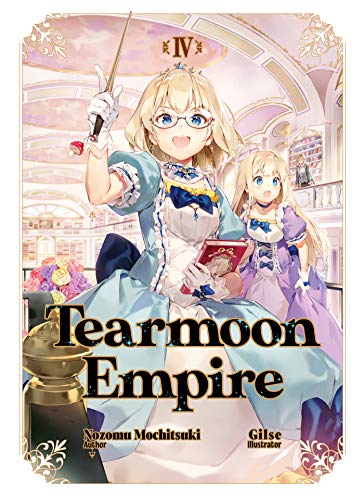By Nozomu Mochitsuki and Gilse. Released in Japan as “Tearmoon Teikoku Monogatari” by TO Books. Released in North America digitally by J-Novel Club. Translated by David Teng.
We’ve now had three books filled with Princess Mia doing something for either selfish or silly reasons (or, increasingly, because she is a very nice person) that ends up misinterpreted by everyone around her as pure brilliance, and we get plenty of that here as well. But we’re starting to also see the rest of the cast accomplish things away from Mia and have their own subplots. No, alas, I don’t mean Miabel, who’s still pretty much the mascot character of the series, and gets left behind for the second half of the book while the rest of the cast have a cruise. Instead, it’s Ludwig, thinking of some offhand remarks of Mia’s as well as what he thinks she would be doing in his place, that leads him to uncover a web of political intrigue that could end up crippling the Empire if things do end up happening the way that Mia predicts they will. His investigation and detective work is a refreshingly sedate part of this book. That said, rest assured there’s still a lot of Mia vs. reality here to love.
As with a couple of other Tearmoon books, the main plot is divided into two large chunks. The first picks up where the previous book left off: the school Mia had planned to start up is floundering, as ,most of the teachers and the headmaster have left. The answer is sadly obvious: Mia may be a very atypical noble now, but most nobles are far more like what Mia was in her previous “life”, and they are not having which this school where horrible farmers will be taught. To solve this, Ludwig suggests bringing in his former mentor, an eccentric old man whose grumpy tendencies and dislike of most nobles play right into Mia’s hands. After this, she is invited on a sea cruise to a tropical island by fellow noble Esmeralda, who IS like most nobles are – you will expect her maid to stab her in the face before the book finishes. Accompanied by Sion, Abel and Keithwood, all of whom supposedly go to “guard” Mia, they sadly run into a typhoon, leaving them stranded on an island that no longer looks as fun.
To get a big negative out of the way first, there is a subplot here about Mia getting a swimsuit for the cruise and realizing that she has tummy bulge, which unfortunately leads to a bunch of fat jokes, though Mia does end up losing most of the weight before the cruise itself. It’s not welcome. The rest of the book is filled with Tearmoon shenanigans, as most of the cast are content to listen to what she says and then make the most amazingly wrong conclusion imaginable, usually to the benefit of everyone involved. The semi-exception here is Keithwood, who knows Mia can be a flake, and is irritated with her mushroom obsession (especially as most of them are poisonous), but still regards her as a force for good. Which, honestly, she is. The narrative may frame Mia’s actions much of the time as self-interest or cowardice, but more and more we’re seeing Mia just be really nice to everyone – and get irritated when other nobles are not, as her anger towards Esmeralda’s treatment of her servant shows. Mia may be no Great Sage, but if things continue to go like this, she may make a very good leader.
The books are getting quite popular in Japan – the author talks about a stage play being made, and a 2nd one is due out this year – and it’s not hard to see why. Mia is fun, the books are exciting, there’s some good politics, and each book is long enough that you get a lot of bang for your buck. Hopefully fewer fat jokes next time, but otherwise still essential.


